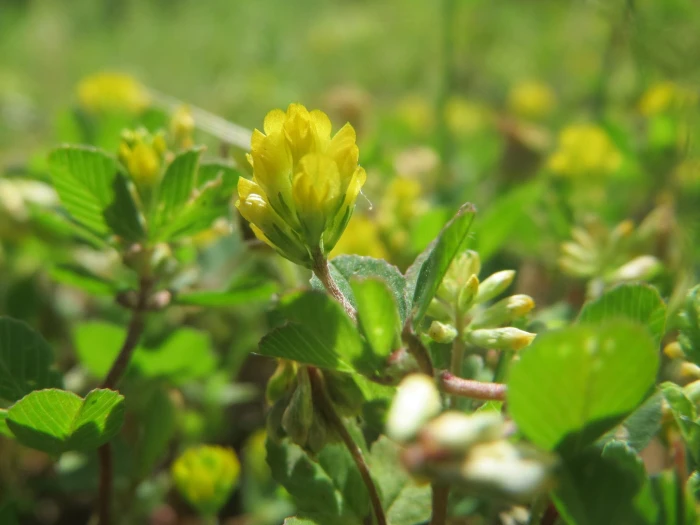Lesser Trefoil
(Trifolium dubium)
Lesser Trefoil (Trifolium dubium)
/
/

Andreas Rockstein
CC BY-SA 4.0
Image By:
Andreas Rockstein
Recorded By:
Copyright:
CC BY-SA 4.0
Copyright Notice:
Photo by: Andreas Rockstein | License Type: CC BY-SA 4.0 | License URL: http://creativecommons.org/licenses/by-sa/4.0/ | Rights Holder: Andreas Rockstein | Publisher: iNaturalist | Date Created: 2017-05-23T17:23:27-07:00 |












Estimated Native Range
Climate Requirements for San Diego, California
| This Plant | Your Site | Plant Suitability for Your Location | ||
|---|---|---|---|---|
| • Precipitation | 5" - 196" | 12" | Your precipitation may be insufficient for this plant. Irrigate N" / year. | Irrigate N" / year |
| • High Temp. | 47°F - 102°F | 84°F | Your summer temperatures are normal for this plant. | Excellent |
| • Low Temp. | -34°F - 73°F | 45°F | Your winter temperatures are normal for this plant | Excellent |
This plant should grow well at your location with about N inches per year (Y minutes per month) of irrigation.
Summary
Trifolium dubium, commonly known as Lesser Trefoil or Suckling Clover, is an annual herb in the pea family Fabaceae, native to grassy areas in Europe and now introduced worldwide. It is often associated with the traditional Irish shamrock. This small plant typically grows to a height of 4-6 inches (10-15 cm) and spreads to form a low mat. Lesser Trefoil has small, yellow flowers that bloom from May to September, which are less showy compared to other clovers but still attract pollinators. The trifoliate leaves are a characteristic feature, and it is an allotetraploid, likely arising from the crossing of Trifolium campestre and T. micranthum.
Lesser Trefoil is valued for its use as a ground cover and for its nitrogen-fixing abilities, which can improve soil fertility. It is also used in lawns where it can tolerate close mowing and is sometimes planted in pastures for forage. In cultivation, it prefers full sun to part shade and thrives in a variety of soil types, provided they are well-drained. It requires moderate watering and is relatively low maintenance. However, it can become invasive outside its native range, so gardeners should check local regulations before planting. It is not typically affected by serious pests or diseases, but it can compete with other plants for space due to its spreading habit.CC BY-SA 4.0
Lesser Trefoil is valued for its use as a ground cover and for its nitrogen-fixing abilities, which can improve soil fertility. It is also used in lawns where it can tolerate close mowing and is sometimes planted in pastures for forage. In cultivation, it prefers full sun to part shade and thrives in a variety of soil types, provided they are well-drained. It requires moderate watering and is relatively low maintenance. However, it can become invasive outside its native range, so gardeners should check local regulations before planting. It is not typically affected by serious pests or diseases, but it can compete with other plants for space due to its spreading habit.CC BY-SA 4.0
Plant Description
- Plant Type: Herb
- Height: 0.1-0.5 feet
- Width: 0.5-1 feet
- Growth Rate: Rapid
- Flower Color: Yellow
- Flowering Season: Fall
- Leaf Retention:
Growth Requirements
- Sun: Full Sun
- Water: Medium
- Drainage: Medium
Common Uses
Groundcover, Low Maintenance
Natural Habitat
Native to grassy areas in Europe
Other Names
Common Names: Little Hop Clover, Low Hop Clover, Shamrock, Small Clover, Small Hop Clover, Small Trefoil, Suckling Clover, Yellow Suckling Clover
Scientific Names: Trifolium dubium, Amarenus flavus, Amarenus flavus, Chrysaspis dubia, Chrysaspis dubia, Chrysaspis procumbens, Trifolium dubium subsp. dubium, Trifolium dubium var. atlanticum, Trifolium dubium var. microphyllum
GBIF Accepted Name: Trifolium dubium